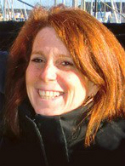Supply and demand: Association between non-English language-speaking first year resident physicians and areas of need in the USA Journal Article
| Authors: | Diamond, L. C.; Mujawar, I.; Vickstrom, E.; Genoff Garzon, M.; Gany, F. |
| Article Title: | Supply and demand: Association between non-English language-speaking first year resident physicians and areas of need in the USA |
| Abstract: | Background: Over 25 million US inhabitants are limited English proficient (LEP). It is unknown whether physicians fluent in non-English languages are training in geographic areas with the highest proportion of LEP people. Diversity of language ability in the physician workforce is an important complement to language assistance services for providing quality care to LEP patients. Objective: To determine whether non-English language–speaking resident physicians matched in the geographic areas where language skills are needed. Design: Cross-sectional study. Participants: Postgraduate medical training applicants to the Association of American Medical College’s Electronic Residency Application Service in 2013–2014 (n = 50,766). We included data from the Graduate Medical Education Track database, mapped against American Community Survey data. Interventions: N/A. Main Measures: We assessed the geographic alignment of non-English language–speaking resident physicians relative to the distribution of the LEP-speaking population. Key Results: While 37% of resident physicians spoke at least one non-English language, in most cases the languages they spoke were not those in greatest need by the US LEP population. LEP speakers’ potential exposure to non-English language–speaking residents varied. For Spanish, the language with the lowest national resident physician to Spanish LEP patient ratio, the ratio was most favorable in New York at 23.7/100,000 LEP population versus 5.1 in Los Angeles. For Tagalog, the group with the highest geographic mismatch, the ratio was 70.4 in New York but 0 in San Diego, San Jose, and Seattle. Among the top five LEP languages in the USA, Chinese-speaking resident physicians were the most geographically matched. Conclusions: We found considerable misalignment of the geographic distribution of non-English language–speaking resident physicians relative to the distribution of the LEP-speaking population. Residency programs in areas of high need could consider better matching the non-English language needs of their community with the language abilities of the resident physicians they are recruiting. © 2020, Society of General Internal Medicine. |
| Keywords: | adult; major clinical study; resident; cross-sectional study; new york; speech; workforce; health disparity; medical school; geographic distribution; california; physician-patient communication; health disparities; physician workforce; graduate medical education; language barriers; postgraduate student; human; male; female; article; communication barrier |
| Journal Title: | Journal of General Internal Medicine |
| Volume: | 35 |
| Issue: | 8 |
| ISSN: | 0884-8734 |
| Publisher: | Springer |
| Date Published: | 2020-08-01 |
| Start Page: | 2289 |
| End Page: | 2295 |
| Language: | English |
| DOI: | 10.1007/s11606-020-05935-7 |
| PUBMED: | 32488693 |
| PROVIDER: | scopus |
| PMCID: | PMC7403237 |
| DOI/URL: | |
| Notes: | Article -- Export Date: 1 September 2020 -- Source: Scopus |
Altmetric
Citation Impact
BMJ Impact Analytics
Related MSK Work






